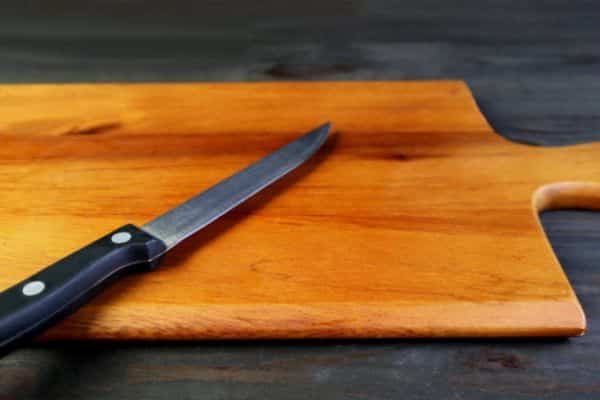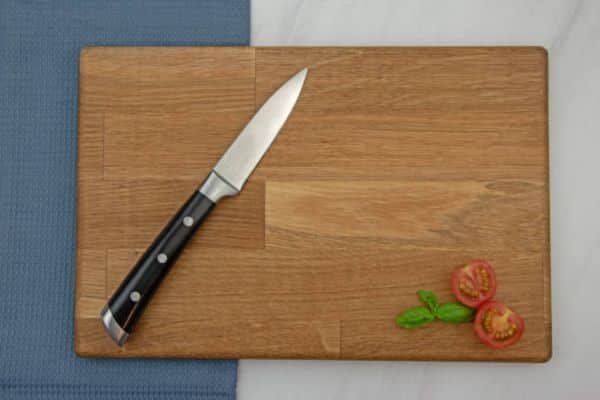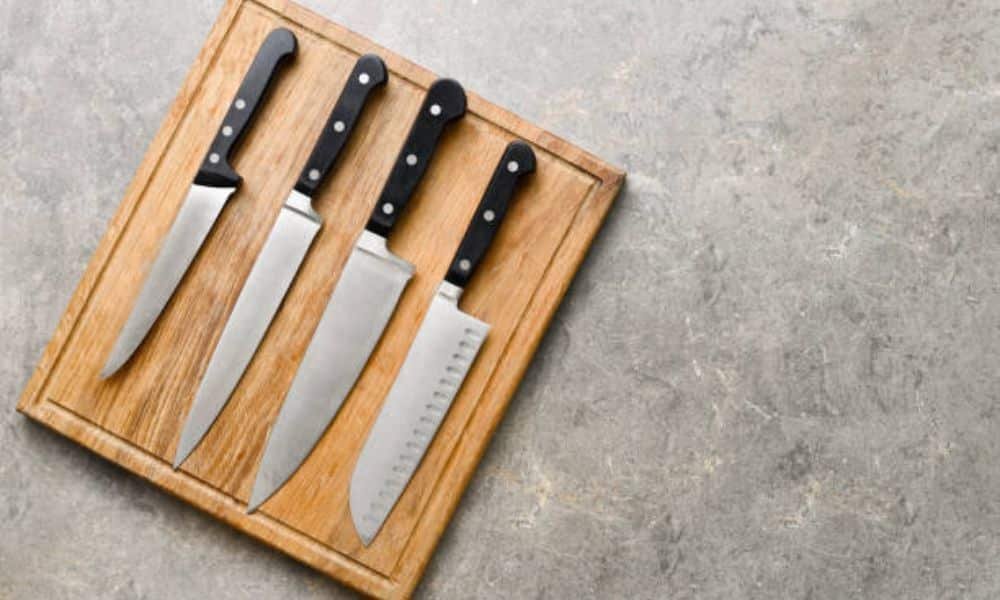I remember the day I got my first real kitchen knife set. My aunt gave it to me as a gift for my new home. It sat on the counter in a wooden block, shiny and sharp. Most of the knives made sense—except one. It wasn’t big like a chef’s knife. Wasn’t tiny like a paring knife either. It was something in between. I didn’t use it for weeks. One night, I needed to slice tomatoes. My regular knife crushed them. So I tried the unknown one. It glided through with ease. I used it on cheese. Then on meat. It quickly became my favourite. Later, I learned what is a utility knife for kitchen. Not flashy—but so useful. It’s now my everyday hero in the kitchen.
What Is a Utility Knife for the Kitchen?
A kitchen utility knife has a medium-sized blade. It usually measures 4 to 7 inches long. It works well for cutting jobs that are too small for a chef’s too big for a paring. Many cooks call it the “in-between” knife.
Think of it like this: a chef’s your SUV—big, strong, built for tough tasks. The is more like a compact car. It’s quick, light, and easy to use. Perfect for your daily prep work.
Common Characteristics:
- Blade length: Usually 5 to 6 inches
- Blade shape: Straight edge, sometimes with a slight curve
- Tip: Pointed, perfect for piercing or precision work
- Use: General-purpose slicing, chopping, trimming
It’s perfect for mid-sized fruits and veggies (like apples, cucumbers, and potatoes), cheese, cured meats, sandwiches, and even light-duty meat trimming.
Why Every Home Cook Needs One

Let me tell you something I’ve learned the hard way: Not every task needs a chef’s. I used to think bigger was always better—until I found myself hacking through a cucumber with a blade better suited for a watermelon.
A utility knife gives you control. It’s lightweight, easy to maneuver, and ideal for those everyday tasks that don’t require a massive blade.
Here’s what I love using mine for:
- Slicing tomatoes without squishing them
- Halving sandwiches with clean, neat cuts
- Trimming fat off chicken thighs
- Peeling and cutting medium fruits like apples or pears
- Chopping herbs in small amounts
- Prepping snacks like cheese cubes and salami
And best of all? It’s often the first I reach for when I don’t feel like pulling out the big guns.
Step-by-Step Guide
If you’re new to knives, or just never knew this little one had such big potential, here’s how to use a knife safely and effectively in your kitchen:
01. Choose the Right Knife for the Job

Before you start slicing, think about the job. For small to medium foods, this knife is perfect. Skip it for hard roots or big meat cuts. I found this blade in my Best Kitchen Knife Set Under 100, and it’s been a game-changer ever since.
02. Hold the Knife Properly
Grip the handle firmly with your dominant hand. Wrap your fingers around it while placing your thumb on one side of the blade and your index finger on the other. This gives you control without strain.
03. Use a Stable Cutting Surface

Always cut on a cutting board. Place a damp cloth underneath the board if it tends to slip. A stable surface is the first step toward safe slicing.
04. Apply Even Pressure
For slicing or trimming, use a gentle rocking or forward motion. Let the knife do the work—don’t force it. Utility knives are designed to be sharp and nimble.
05. Clean and Store Properly
After use, hand wash and dry immediately. Don’t toss it in the dishwasher—it’ll dull faster. Store it in a knife block or on a magnetic strip.
Practical Tips from My Kitchen

Over the years, I’ve come to rely on a few habits that keep my knife (and my fingers) in top shape.
Keep It Sharp—Always
There’s nothing more dangerous than a dull knife. I touch up the edge every few uses with a honing rod, and I get it professionally sharpened every few months. A sharp will slice tomatoes so cleanly it feels like magic.
Invest in Quality
You don’t need a $300, but don’t go too cheap either. I love Japanese stainless steel for its balance of sharpness and durability. Brands like Victorinox, Wüsthof, and Global have excellent utility knives for under $100.
Use It for Prep Work
When I’m cooking a big dinner, I start with the knife to handle all the small and medium slicing—onions, bell peppers, herbs, and garlic. It keeps my prep organised before I switch to the chef’s for bigger tasks.
Avoid Using It on Bone or Frozen Foods
This little knife isn’t meant to tackle bones or icy meats. Doing so can chip the blade or ruin the edge. For tougher jobs, stick to a cleaver.
Keep It Handy
I keep my knife on a magnetic strip above the counter, within easy reach. It’s the kind you want nearby, not buried in a drawer.
Utility Knife vs Other Kitchen Knives: What’s the Difference?
To understand what makes so special, it helps to compare it with its kitchen companions.
| Knife | Blade Length | Best For |
| Paring Knife | 3–4 inches | Peeling, coring, delicate tasks |
| Utility | 5–6 inches | Everyday slicing, small meat/veg prep |
| Chef’s | 8–10 inches | Chopping, dicing, big jobs |
| Serrated | 7–9 inches | Bread, tomatoes, citrus |
| Boning | 5–7 inches | Removing meat from bones |
So while the chef’s is the star of the kitchen and the paring knife handles finesse, Your reliable sidekick, ready to take on just about anything in between.
Final Thought
Today, I have more knives than I did back in that first kitchen. Still, I find myself reaching for the same one again and again. It’s the most-used knife in my drawer. Simple. Reliable. Always ready.
You don’t need every fancy tool to cook well. Just one that works. That’s where this shines. It’s easy to grab and quick to use.
The next time you’re cutting a sandwich or slicing fruit, grab the one that gets the job done. The small blade that never complains. It’s not flashy, but it works hard.

